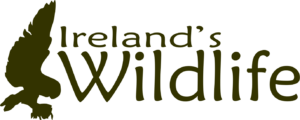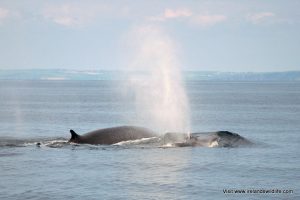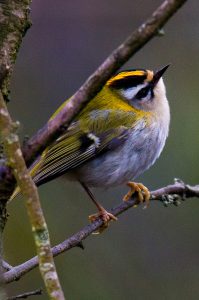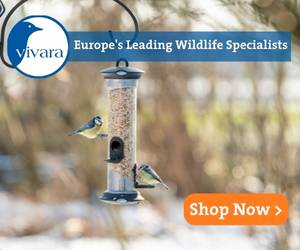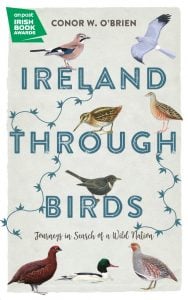
If a lifetime of watching wildlife has taught me anything it’s that searching for specific species can be a pretty hit-or-miss affair.
That uncertainty is one of the great joys of the natural world: the sense of anticipation, never quite knowing what you might see, makes every sojourn into the outdoors a new adventure. City or countryside, coastal wetland or upland moor, every trip is gravid with opportunity. When you’re searching for wildlife, covering even familiar ground becomes a voyage into the unknown.
Not knowing what you’ll see on any given day is all part of the appeal, but it’s fair to say that most wildlife enthusiasts, and particularly birders, will have a target list of “must-see” species that, for one reason or another, have managed to elude them up to now. Seeing these target species is high on their priority list, and some will go to extraordinary lengths to find them.
In Ireland Through Birds: Journeys in Search of a Wild Nation (Merrion Press, October 2019), author and birder Conor W. O’Brien takes us on a journey around this island nation on a journey to find some of his “Must See” Irish birds.
The press release accompanying my review copy, and the blurb on the inside flap of the book, informed me that Ireland Through Birds chronicles Conor’s quest to seek out “12 of Ireland’s rarest and most elusive birds”. My natural curiosity kicked in, and the first thing I did was to check Conor’s list of birds. What struck me immediately was that, while not exactly common, the birds featured in the book aren’t particularly difficult to see in Ireland either (with a few notable exceptions like ring ouzel and corncrake perhaps). To put that statement into context I would typically see eight or more of the 12 during any given calendar year, have seen 11 of them within the confines of a single county (Cork), and five of them from my West Cork garden.
I was a little surprised, as it seemed to throw the basic premise of the book — scouring the length and breadth of Ireland to unearth hard-to-find species — into question. But they say you shouldn’t judge a book by its cover, so in the spirit of that overly-worn metaphor, perhaps I needed to look a little deeper. I put my initial misgivings aside and started to read.
Conor begins with a short chapter introducing his love of the natural world, exploring some of the challenges faced by wildlife in a radically transformed Irish landscape, and setting the scene for the places he’ll visit through the book. He then launches straight into an expedition in search of Merlin in Dundalk, Co. Louth. This tiny falcon, a pocket-sized powerhouse of mortal mayhem, is our smallest bird of prey and has been an enduring favourite of mine since I first picked up a pair of binoculars as a youngster. I still get a thrill every time I see one of these incredible little birds. It was an auspicious start.
While it’s true, like many raptors Merlins can be elusive, if you put yourself in the right habitat at the right time of year, it’s a species that shouldn’t be all that difficult to pin down. You’re much more likely to encounter them during the winter when they move down from their upland breeding haunts to find easier hunting at lowland and coastal sites around the country. In that sense, Conor had put himself in a likely enough location by visiting Dundalk. His description of the visit and the various birds he encounters along the way is interspersed with historical and cultural detail about the location and its people. It makes for a compelling read — although ultimately, in this case, Conor fails to connect with his quarry.
Each chapter follows a similar pattern, alternating between Conor’s visit to a particular location in Ireland looking for one of the elusive 12, and snippets of cultural and historical colour that help bring the places he visits alive. The occasional stretched metaphor and jarring simile aside, the prose is well written and easy to read. I found it a tad verbose at times, but the evocative descriptions are delivered with a pace and energy that breaths life into Conor’s quests. You feel his triumphs and disappointments, in equal measure, as the book progresses.
The fact that Conor fails to connect with a significant portion of his target species reinforces the unpredictable nature of wildlife watching. It also offers a stark testament to just how tricky it now is to find birds that were, until fairly recently, not that hard to see in Ireland. Our natural world is shrinking at an alarming rate as we continue our rampant drive to clear, intensify, build, drain, harvest and manicure. Wildlife, already pushed to the fringes, has started disappearing altogether and birds, along with everything else, are ever harder to find.
Still, I can’t help feeling that with a little more research, broader scope in terms of potential locations and tapping into some local birding knowledge, Conor could have upped his hit rate for Ireland Through Birds considerably.
But that, perhaps, misses the point of the book. Through all his hits and misses, travelling the length and breadth of Ireland, Conor reveals a country scarred by the influence of humanity. Not even our wildest uplands are spared the taint: pock-marked by sterile Sitka spruce plantations, overgrazed by legions of sheep and burned indiscriminately, nature seems forever on the back foot even here. And yet our wildlife endures. Invest a bit of time exploring the natural world and you’ll find it has a boundless capacity to surprise and delight. As Conor so aptly demonstrates in Ireland Through Birds, you won’t always find exactly what you’re looking for, but you will experience something truly worthwhile.
Ireland Through Birds by Conor W. O’Brien is available online and through bookshops. You can buy it on Amazon here.
